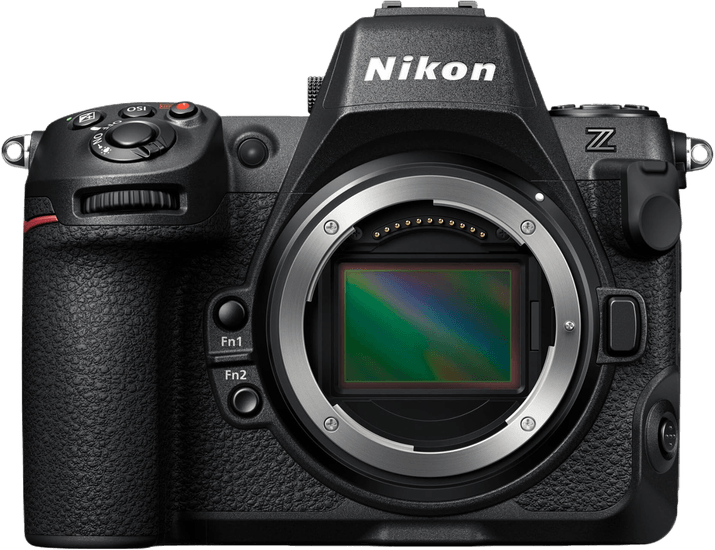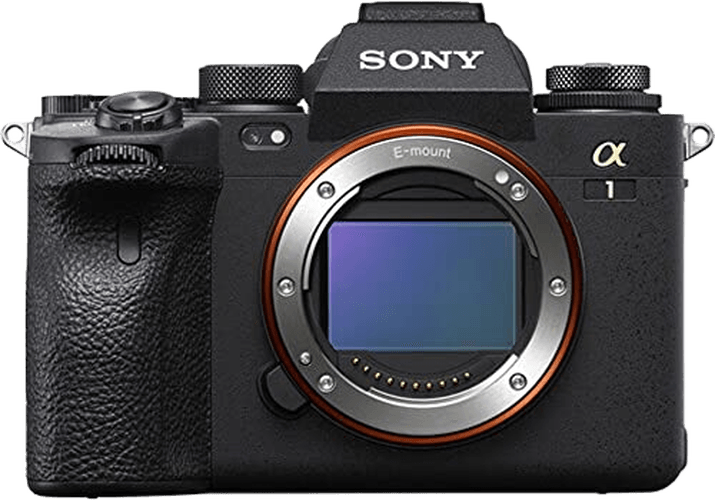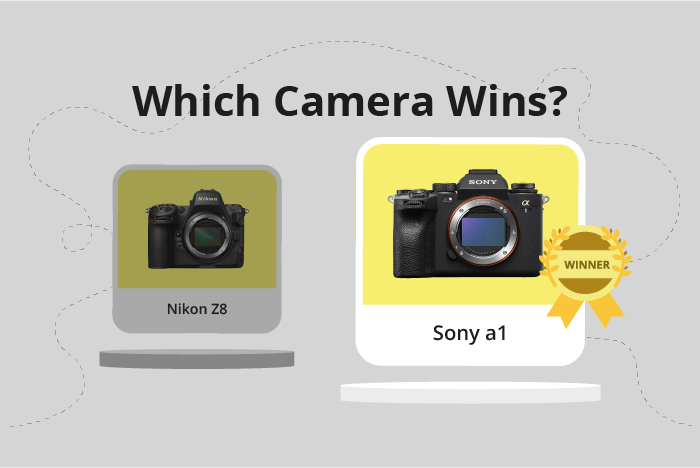Nikon Z8 vs Sony a1 Comparison
Nikon Z8

Sony a1

The Sony a1 outperforms the Nikon Z8 with a score of 86/100 compared to 79/100. Both cameras are mirrorless and share similar dimensions, with the Nikon Z8 measuring 144 x 119 x 83mm and the Sony a1 at 129 x 97 x 81mm. The Sony a1 is lighter, weighing 737g, while the Nikon Z8 weighs 910g.
The Sony a1 excels with a lower launch price of $6499 compared to the Nikon Z8’s $39999. It also has the advantage of being released earlier, in 2021, while the Nikon Z8 was announced in 2023. The Nikon Z8 does not have any clear advantages over the Sony a1 in these specifications.
Considering the higher score, lower price, and lighter weight, the Sony a1 is the better choice between these two mirrorless cameras.
Nikon Z8 vs Sony a1 Overview and Optics
The Sony a1 outperforms the Nikon Z8 in optics with a score of 89/100, compared to the Nikon Z8’s 88/100. Both cameras share several similarities in their specifications. They have the same shooting speed of 30, CMOS sensor type, full frame sensor size, and image stabilisation. Additionally, both cameras have a DXOMARK score of 98 for their sensors.
The Sony a1 has an edge over the Nikon Z8 with its higher megapixel count of 50.1, compared to the Nikon Z8’s 46 megapixels. This difference allows the Sony a1 to capture more detail in images, providing better resolution and image quality. The Sony a1 also has a dual Bionz XR processor, which contributes to faster processing speeds and improved performance, particularly in low-light situations.
The Nikon Z8, however, has its own advantages. Its Expeed 7 processor is still a strong performer, and the camera’s Nikon Z lens mount offers compatibility with a wide range of high-quality lenses. While the Sony a1’s Sony FE lens mount also has an extensive lens selection, the Nikon Z mount has been praised for its optical performance and potential for future lens development.
Taking into account these factors, the Sony a1 is the winner in optics due to its higher megapixel count and dual Bionz XR processor, providing better image quality and performance. Nevertheless, the Nikon Z8 is a strong contender with its Expeed 7 processor and Nikon Z lens mount, making it a suitable choice for photographers who prioritize lens compatibility and potential for future lens development.
Nikon Z8 vs Sony a1 Video Performance
The Nikon Z8 outperforms the Sony a1 in video capabilities, with a video score of 100/100 compared to the Sony a1’s 86/100. Both cameras share impressive specifications, including a maximum video resolution of 8K and maximum video dimensions of 7680 x 4320. Additionally, both offer a maximum video frame rate of 120fps, ensuring smooth and high-quality footage.
The Nikon Z8 takes the lead with its built-in time-lapse functionality, offering photographers and videographers an additional creative tool for capturing stunning visuals. This feature sets the Z8 apart from the Sony a1, which does not have built-in time-lapse functionality.
On the other hand, the Sony a1 does not outshine the Nikon Z8 in any specific video capabilities. Both cameras share the same core video specifications, with the only notable difference being the built-in time-lapse functionality in the Nikon Z8.
Taking these factors into account, the Nikon Z8 is the superior choice for those seeking advanced video capabilities in their camera. The built-in time-lapse functionality offers a unique advantage over the Sony a1, providing users with an extra layer of creative possibilities. While the Sony a1 is still a powerful camera, it falls short in comparison to the Nikon Z8’s video performance. Therefore, for users prioritizing video capabilities, the Nikon Z8 is the recommended choice.
Nikon Z8 vs Sony a1 Features and Benefits
The Sony a1 takes the lead in the feature comparison with a score of 83/100, while the Nikon Z8 trails behind with a score of 61/100. Both cameras share some common features, including touchscreen functionality, Wi-Fi capability, and the absence of GPS.
The Sony a1 outshines the Nikon Z8 in several aspects. It has a flip screen, which enhances shooting flexibility, allowing photographers to capture images from different angles easily. Additionally, the Sony a1 comes equipped with Bluetooth connectivity, making it simpler to transfer files and connect with other devices. Despite having a smaller screen size of 3 inches compared to the Nikon Z8’s 3.2 inches, the Sony a1’s flip screen feature proves more valuable for practical use.
On the other hand, the Nikon Z8 boasts a higher screen resolution, with 2,088,960 dots compared to the Sony a1’s 1,440,000 dots. This higher resolution results in a sharper and clearer display, enhancing the user’s experience while reviewing images or navigating through settings. However, the absence of a flip screen and Bluetooth connectivity put the Nikon Z8 at a disadvantage compared to the Sony a1.
Taking all factors into account, the Sony a1 emerges as the superior camera due to its flip screen and Bluetooth capabilities, which contribute to its higher feature score. The Nikon Z8’s advantage in screen resolution does not outweigh the practical benefits offered by the Sony a1’s additional features. Therefore, the Sony a1 proves to be the better choice for photographers seeking an advanced camera with versatile and convenient features.
Nikon Z8 vs Sony a1 Storage and Battery
The Sony a1 outperforms the Nikon Z8 in storage and battery with a score of 73/100 compared to the Nikon’s 68/100. Both cameras share similarities in storage, featuring two memory card slots and compatibility with SD, SDHC, SDXC (UHS-II), and USB charging capabilities.
The Sony a1’s advantage lies in its longer battery life of 530 shots and compatibility with CFexpress Type A cards, compared to the Nikon Z8’s 340 shots and compatibility with CFexpress and XQD cards. The use of NP-FZ100 battery in the Sony a1 contributes to its extended battery life.
On the other hand, the Nikon Z8’s support for XQD cards provides an edge in terms of storage flexibility. However, this advantage is not significant enough to outweigh the benefits of the Sony a1’s longer battery life and storage options.
Ultimately, the Sony a1 is the superior choice in terms of storage and battery performance, offering photographers extended shooting capabilities and a wider range of memory card compatibility.
Nikon Z8 vs Sony a1 – Our Verdict
Are you still undecided about which camera is right for you? Have a look at these popular comparisons that feature the Nikon Z8 or the Sony a1:

